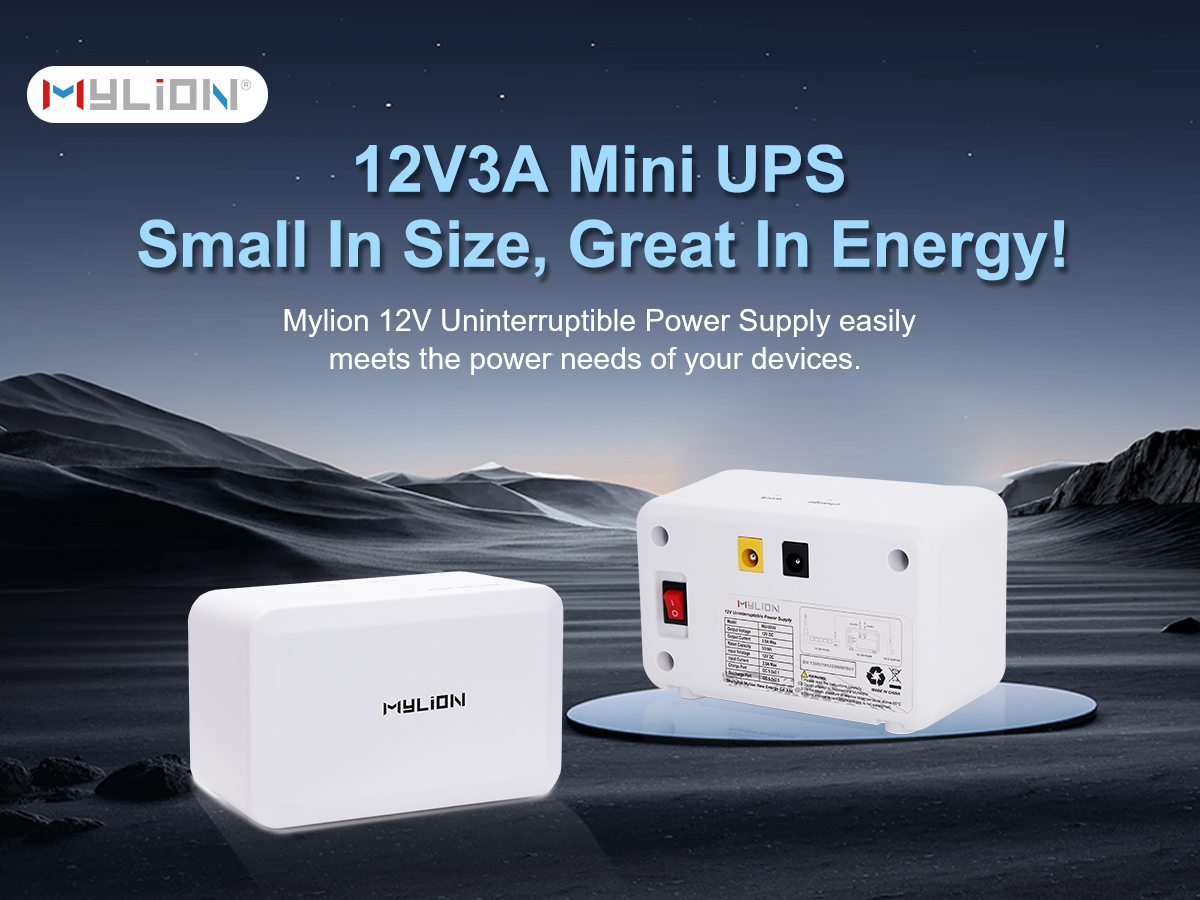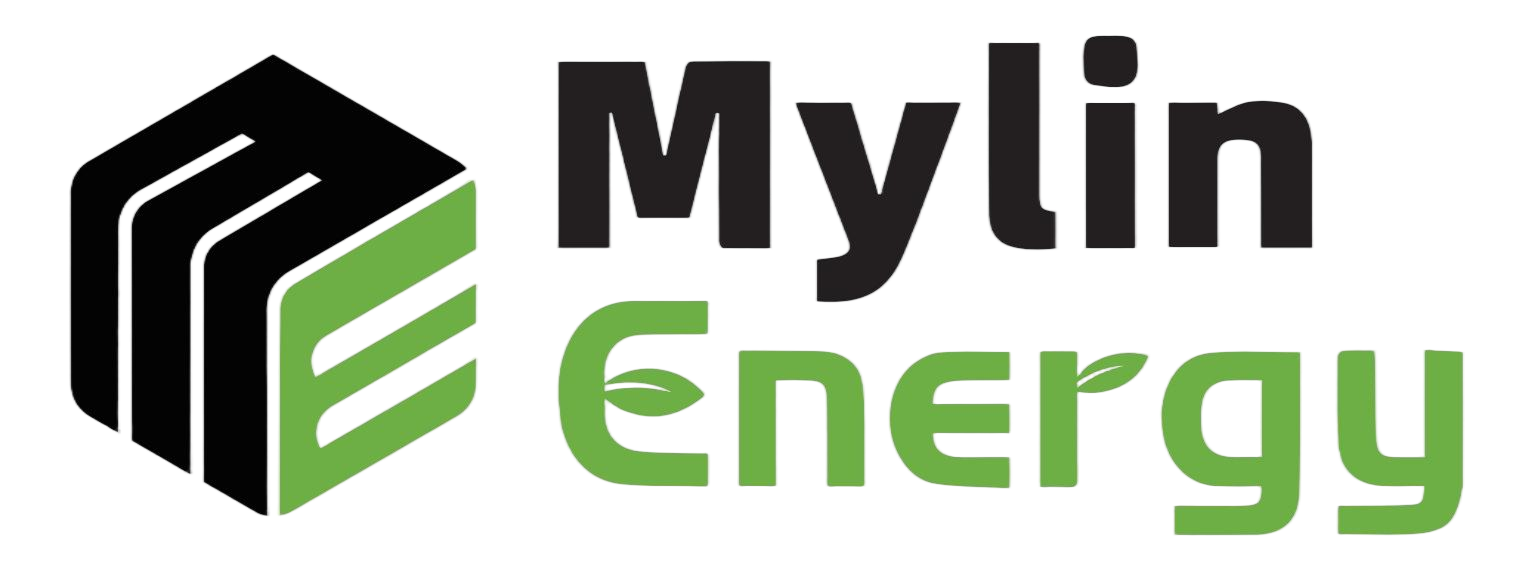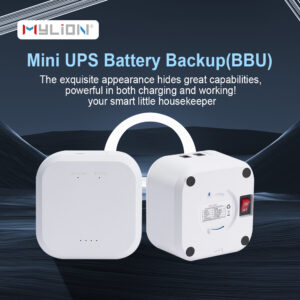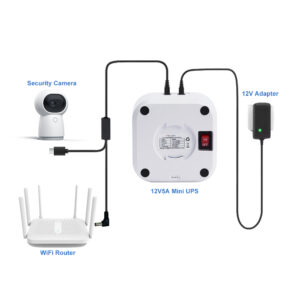Why Do Mini UPS Units Fail Prematurely?
Studies show 83% of Mini UPS battery degradation stems from improper usage rather than natural aging. A lithium battery rated for 5 years may lose half its capacity in just 2 years. This guide reveals:
✔ 5 commonly overlooked mistakes
✔ Lab-verified maintenance techniques
✔ Battery-type-specific strategies

Tip 1: Charging habits – avoid “over-care”
Lithium battery “maintenance”
Ideal charging range: maintain at 20%-80% (similar to smartphone maintenance)
Key mistakes:
❌ Continuously maintain 100% charge state (accelerate electrode oxidation)
❌ Completely drain the battery to 0% before charging (causing deep discharge damage)
Special battery requirements
Fully discharge/charge (Mylion recommends a complete charge and discharge cycle for the mini UPS every 3-5 months)
Charger matching: The correct charging current must be used. If our 5A MINI UPS-MU35 is used to provide backup power to a 4.5A device, the adapter is recommended to use 5A (if MU35 uses a 3.5A adapter, the output of MU35 is not 5A, but 3.5A, and the output current of the mini ups matches the adapter)
Test data:
Lithium battery maintained at 100% charge state: the capacity is 62% after 300 cycles
Lithium battery maintained at 20%-80% charge state: the capacity is after 500 cycles 85%
Tip 2: Temperature control – defeat the “invisible killer”
The impact of temperature on batteries
1. The charging temperature range of Mylion Mini UPS is 0-45°C
Low temperature environment (below 0°C):
It may cause capacity to decrease and internal resistance to increase.
The discharge voltage is reduced, and it is easy to have rapid voltage drop and premature power failure.
If forced charging at low temperature, lithium metal precipitation (lithium dendrites) is likely to occur, causing safety risks (short circuit).
High temperature environment (> 45°C):
The electrolyte decomposes faster, the stability of positive and negative electrode materials decreases, and it is easy to cause swelling and capacity decay.
Long-term high temperature operation will accelerate battery aging and shorten service life.
2. Cycle life
The cycle life is longer within the temperature range (generally 0°C ~ 45°C);
Exceeding this range will cause chemical reactions to be unstable, battery capacity decay to accelerate, and life will be greatly shortened.
3. Safety
High temperature may cause internal gas generation, battery bulging and even thermal runaway (fire, explosion).
Low-temperature charging may cause lithium dendrites to pierce the diaphragm, causing internal short circuits and safety accidents.
4. Storage performance
Batteries will self-discharge faster and capacity will decay when stored at high temperatures;
Long-term storage at low temperatures can delay aging, but low voltage may cause over-discharge and make it impossible to restore use.
If you need a Mylion Mini UPS that is resistant to high or low temperatures, please inform our sales staff in advance before purchasing.

Tip 3: Load management – prevent “death from overwork”
Continuous load ≤ 70% of rated power
Example:
The rated output power of MU68-Mini UPS is 44.4Wh:
Recommended continuous load ≤ 70% × 44.4W = 31W
If the device occasionally exceeds 31W for a short time (such as the startup current peak), the mini UPS can withstand it;
But for long-term operation, it is best to keep the load within 31W.
To ensure the safe and stable operation of the Mini UPS, it is recommended that the continuous load power does not exceed 70% of the rated output power. This design can effectively extend battery life, avoid overheating and improve operational reliability.
Conclusion: Smart Maintenance Beats Replacement
To keep the battery healthy, it is recommended to perform a complete charge and discharge cycle on the Mylion Mini UPS every 3-5 months.
A $50 Mini UPS with proper care:
Annual cost drops from $30 to $10
Prevents potential $1,000+ data loss during outages






